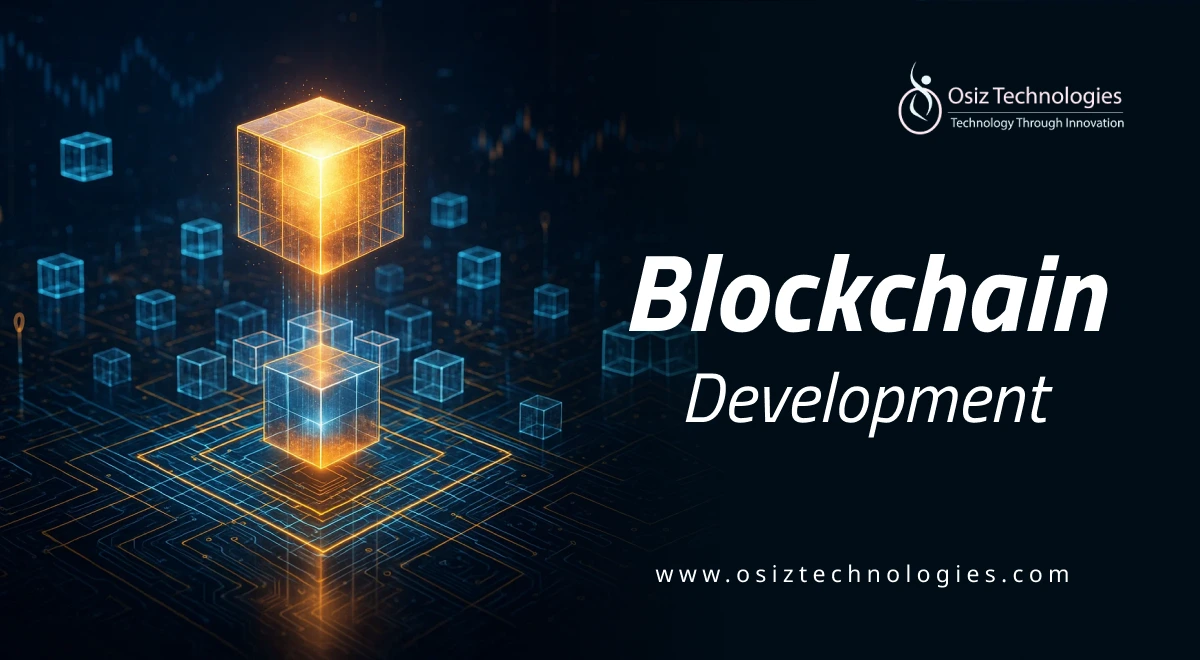In the rapidly evolving world of technology, blockchain stands out as a transformative force for enterprises. This guide aims to provide a comprehensive overview of deploying blockchain solutions, covering everything from architecture design to security best practices. Whether you’re considering blockchain for ERP, supply chain management, or financial services, understanding the deployment process is crucial. We’ll explore key considerations, integration with legacy systems, platform selection, and much more, ensuring you’re equipped to make informed decisions.
Understanding Blockchain Technology
Blockchain technology is a decentralized digital ledger that records transactions across many computers. This decentralization ensures that records cannot be altered retroactively, providing a high level of security and transparency. By understanding the fundamentals of blockchain, enterprises can better appreciate its potential applications.
Key Features of Blockchain
Decentralization: Eliminates the need for a central authority.
Transparency: All participants can view the transaction history.
Immutability: Once recorded, transactions cannot be changed.
Security: Cryptographic techniques protect data integrity.
Enterprise Blockchain Deployment Guide
Deploying a blockchain solution requires careful planning and execution. Here’s a structured approach to guide you through the process.
1. Define Your Objectives
Before diving into deployment, clarify the specific problems you aim to solve with blockchain. Are you looking to enhance supply chain transparency, improve transaction security, or streamline operations? Establishing clear objectives will guide your decisions throughout the deployment process.
2. Assess Current Infrastructure
Evaluate your existing systems and processes. Understanding how blockchain will integrate with your legacy systems is crucial. This assessment will help identify potential challenges and opportunities for improvement.
Blockchain Architecture Design
Designing the right architecture is essential for a successful blockchain deployment. Consider the following elements:
1. Type of Blockchain
Decide between public, private, or consortium blockchains based on your needs. Public blockchains like Ethereum offer transparency, while private blockchains provide more control and privacy.
2. Consensus Mechanisms
Select a consensus mechanism that aligns with your objectives. Proof of Work, Proof of Stake, and Practical Byzantine Fault Tolerance are common options, each with its own advantages and limitations.
Platform Selection
Choosing the right blockchain platform is critical. Popular options include:
1. Hyperledger
Ideal for enterprise solutions, Hyperledger offers modular architecture and supports various consensus algorithms.
2. Ethereum
Known for its smart contract capabilities, Ethereum is suitable for decentralized applications.
3. Stellar
Best for cross-border transactions, Stellar focuses on fast and low-cost transfers.
Integration with Legacy Systems
Integrating blockchain with existing systems can be challenging but necessary. Consider the following strategies:
1. API Development
Develop APIs that enable communication between blockchain and legacy systems, ensuring seamless data transfer.
2. Middleware Solutions
Utilize middleware to facilitate interactions between different platforms, allowing for smoother integration.
Enterprise Blockchain Security Best Practices
Security is paramount in blockchain deployment. Implement these best practices:
1. Regular Audits
Conduct regular security audits to identify vulnerabilities and ensure compliance with regulations.
2. Data Encryption
Use robust encryption methods to protect sensitive data stored on the blockchain.
Regulatory Compliance
Ensure your blockchain deployment adheres to local and international regulations. This may involve:
1. Understanding Legal Frameworks
Stay informed about the legal implications of blockchain technology in your jurisdiction.
2. Engaging Legal Experts
Consult with legal professionals specializing in blockchain to navigate complex regulations.
Blockchain Interoperability Solutions
Interoperability between different blockchain networks is essential for maximizing efficiency. Consider solutions like:
1. Cross-Chain Protocols
Utilize protocols that facilitate communication between different blockchains, enhancing data sharing.
2. Atomic Swaps
Implement atomic swaps to enable direct exchanges between cryptocurrencies on different blockchains.
Scalability Deployment
As your blockchain application grows, scalability becomes a priority. Strategies include:
1. Layer 2 Solutions
Consider Layer 2 solutions like Lightning Network for Bitcoin or Plasma for Ethereum to enhance transaction throughput.
2. Sharding
Implement sharding to distribute data across multiple nodes, improving performance and scalability.
Managed Services vs. Self-Managed Solutions
Decide whether to opt for managed blockchain services or self-managed solutions:
1. Managed Services
These services offer ease of use, allowing you to focus on your core business while experts handle the technical aspects.
2. Self-Managed Solutions
Provides greater control and customization but requires a skilled team to manage infrastructure and security.
Blockchain Development Lifecycle
Understanding the blockchain development lifecycle is crucial for successful deployment:
1. Planning and Design
Define your project scope, objectives, and architecture.
2. Development and Testing
Develop smart contracts and conduct rigorous testing to ensure functionality and security.
3. Deployment and Maintenance
Deploy your blockchain solution and establish a maintenance plan for ongoing support.
Blockchain Deployment for Financial Services
In the financial sector, blockchain can revolutionize processes:
1. Enhanced Security
Blockchain offers secure transaction methods, reducing fraud risk.
2. Improved Efficiency
Streamline processes like cross-border payments, reducing transaction times and costs.
Measuring Blockchain ROI for Enterprises
Evaluating the return on investment (ROI) for blockchain initiatives is essential. Consider:
1. Cost Savings
Analyze reductions in operational costs and fraud prevention.
2. Increased Revenue
Identify new revenue streams enabled by blockchain technology.
Conclusion
Deploying a blockchain solution is a complex yet rewarding endeavor for enterprises. By following this guide, you can navigate the intricacies of blockchain deployment and ensure a successful implementation that aligns with your business goals. As an experienced Blockchain Development Company, Osiz Technologies provides end-to-end blockchain solutions that empower businesses to innovate securely and efficiently. For more insights and expert assistance, connect with us at osiztechnologies.
Listen To The Article
Recent Blogs

Black Friday 30%
Offer









